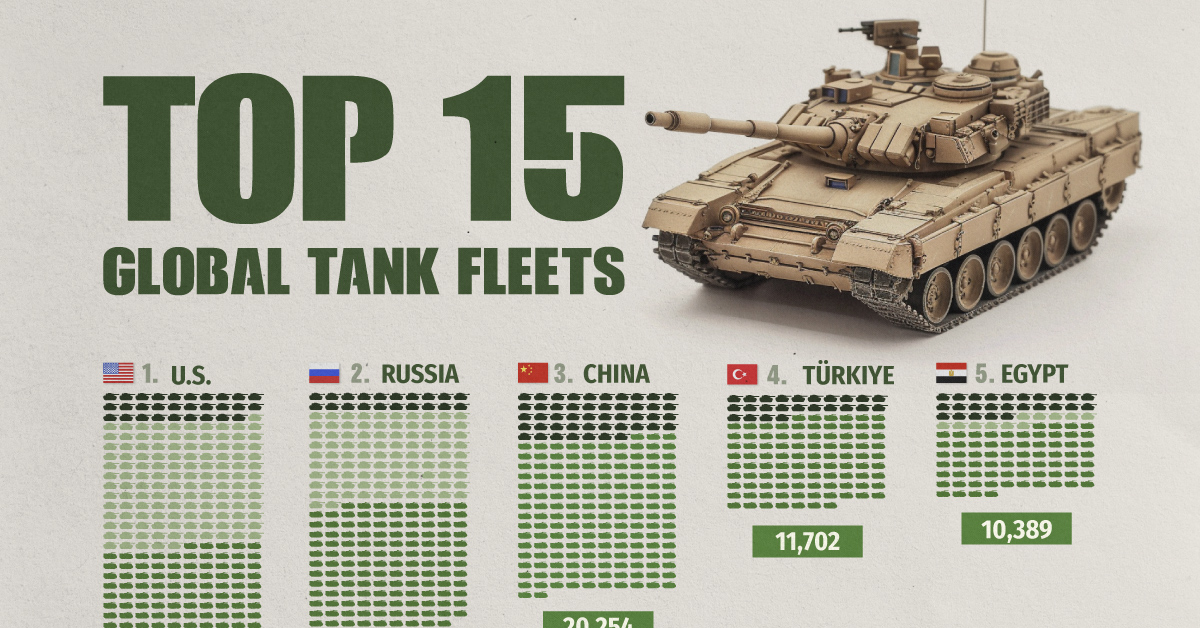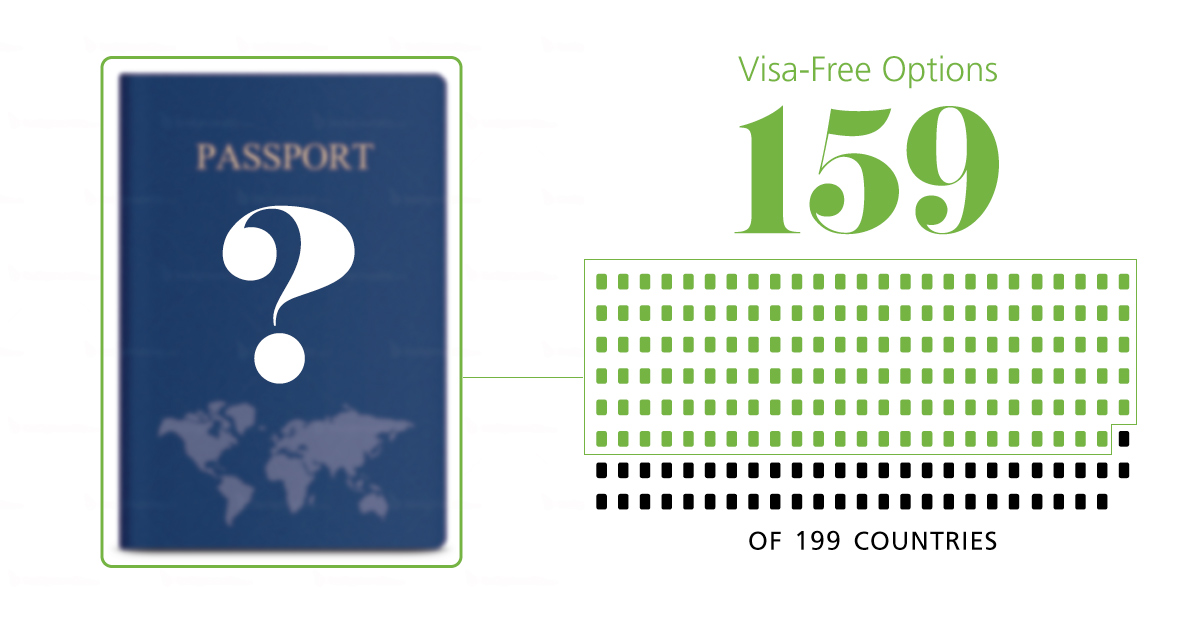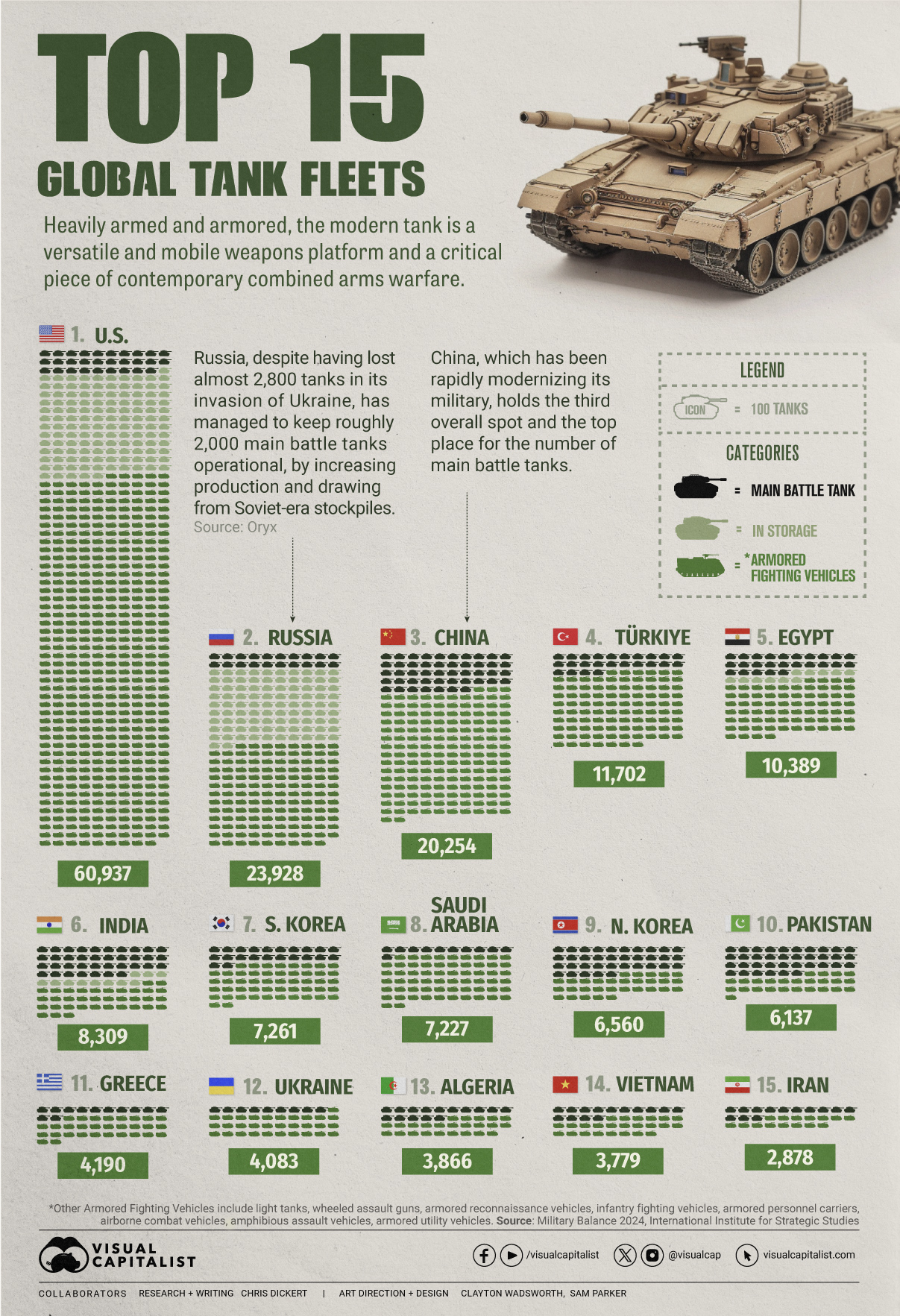Politics
What is the World’s Most Powerful Passport?

The World’s Most Powerful Passports
Which passports are travel assets, and which are liabilities?
The Chart of the Week is a weekly Visual Capitalist feature on Fridays.
Whether you seek to explore distant lands, or you just want to sit on a remote island beach with a margarita, your passport can be your biggest travel asset. The right document grants you visa-free access to over 150+ countries, and makes applying for entry to the other places a short and easy afterthought.
But a passport can also be your biggest liability. Having a passport from the wrong place means travel is extremely restricted to just a few countries – and these are generally not the places travelers want to go, anyways.
Even worse, passports on the lower end of the spectrum are also heavily scrutinized at entry-points around the world. If you have a document from Afghanistan, Sri Lanka, Lebanon, or several other countries, there may be many hoops for you to jump through to get to your final destination.
The Most Powerful Passport
According to the Passport Index, the distinction for the world’s most powerful passport actually ends up as a tie between Germany and Singapore. Both have unparalleled access to visa-free entries, each with a list of 159 countries that citizens can go to without any hassles.
Like Germany, most other Western European nations do similarly well in the visa-free department:
| Global Passport Rank | Country | Number of Countries (Visa-Free) |
|---|---|---|
| #1 (tie) | Germany | 159 |
| #2 (tie) | Sweden | 158 |
| #3 (tie) | Denmark | 157 |
| #3 (tie) | Finland | 157 |
| #3 (tie) | Italy | 157 |
| #3 (tie) | France | 157 |
| #3 (tie) | Spain | 157 |
| #3 (tie) | Norway | 157 |
| #3 (tie) | United Kingdom | 157 |
In Asia, however, things are quite different. After Singapore and a few other countries (Japan, South Korea, and Malaysia), things drop off faster.
| Global Passport Rank | Country | Number of Countries (Visa-Free) |
|---|---|---|
| #1 (tie) | Singapore | 159 |
| #2 (tie) | South Korea | 158 |
| #3 (tie) | Japan | 157 |
| #5 (tie) | Malaysia | 155 |
| #16 | Hong Kong | 142 |
| #18 | Israel | 138 |
| #19 (tie) | Brunei | 136 |
| #24 | UAE | 128 |
| #30 | Taiwan | 121 |
Further down the list in Asia, citizens of certain countries find themselves in even a tougher place, especially if they reside in the Middle East. Countries like Afghanistan (22), Pakistan (25), Iraq (26), Syria (30), and Bangladesh (35) have some of the shortest lists of visa-free countries that citizens have access to.
North America
In North America, the United States and Canada both have powerful passports with 157 and 155 visa-free options respectively.
However, they differ in a few key areas. Americans have visa-free access to Armenia, Equatorial Guinea, Palau, the Marshall Islands, and the Central African Republic, while Canadians have visa-free access to Bolivia, Venezuela, and Gambia.
Don’t Own These Passports…
We alluded earlier to the fact that a passport can also be a traveler’s biggest liability.
Here are some of the countries that you would likely not want to have a passport from:
| Global Passport Rank | Country | Number of Countries (Visa-Free) |
|---|---|---|
| #89 (tie) | Sri Lanka | 36 |
| #89 (tie) | Nepal | 36 |
| #89 (tie) | Iran | 36 |
| #89 (tie) | Yemen | 36 |
| #89 (tie) | Sudan | 36 |
| #90 | Bangladesh | 35 |
| #91 | Somalia | 33 |
| #92 | Syria | 30 |
| #93 | Iraq | 26 |
| #94 | Pakistan | 25 |
| #95 | Afghanistan | 22 |
War
Visualized: Top 15 Global Tank Fleets
Heavily armed and armored, the modern tank is a versatile and mobile weapons platform, and a critical piece of contemporary warfare.

The Top 15 Global Tank Fleets
This was originally posted on our Voronoi app. Download the app for free on iOS or Android and discover incredible data-driven charts from a variety of trusted sources.
Heavily armed and armored, the modern tank is a versatile and mobile weapons platform, and a critical piece of contemporary warfare.
This visualization shows the top 15 global tank fleets, using data from the 2024 Military Balance report from the International Institute for Strategic Studies (IISS).
Let’s take an in-depth look at the top three fleets:
1. United States
As the world’s pre-eminent military power, it’s perhaps no surprise that the United States also has the largest tank fleet, by a wide margin.
In total, they have just over 45,000 armored fighting vehicles in operation, along with 2,640 main battle tanks (MBTs), and 12,800 vehicles in storage, of which 2,000 are main battle tanks.
| Category | Vehicles | Global rank |
|---|---|---|
| Main battle tanks | 2,640 | 4 |
| Armored reconnaissance | 1,745 | 1 |
| Infantry fighting vehicles | 3,262 | 3 |
| Armored personnel carriers | 10,644 | 1 |
| Amphibious assault vehicles | 1,401 | 1 |
| Armored utility vehicles | 28,445 | 1 |
| Storage | 12,800 | 1 |
| Total | 60,937 | 1 |
The U.S. is internalizing the lessons from the ongoing invasion of Ukraine, where Western-supplied anti-tank weapons and massed Ukrainian artillery have been cutting Russian tanks to pieces. As a result, the U.S. recently canceled an upgrade of the M1 Abrams in favor of a more ambitious upgrade.
Meanwhile, the U.S. is nervously eyeing a more confident China and a potential clash over Taiwan, where air and naval forces will be critical. However, a recent war game showed that Taiwanese mechanized ground forces, kitted out with American-made tanks and armored fighting vehicles, were critical in keeping the island autonomous.
2. Russia
According to Oryx, a Dutch open-source intelligence defense website, at time of writing, Russia has lost almost 2,800 main battle tanks since invading Ukraine. Considering that in the 2022 edition of the Military Balance, Russia was estimated to have 2,927 MBTs in operation, those are some hefty losses.
Russia has been able to maintain about 2,000 MBTs in the field, in part, by increasing domestic production. Many defense plants have been taken over by state-owned Rostec and now operate around the clock. Russia is also now spending a full third of their budget on defense, equivalent to about 7.5% of GDP.
At the same time, they’ve also been drawing down their Soviet-era stockpiles, which are modernized before being sent to the front. Just how long they can keep this up is an open question; their stockpiles are large, but not limitless. Here is what their storage levels look like:
| Category | 2023 | 2024 | YOY change |
|---|---|---|---|
| Main battle tanks | 5,000 | 4,000 | -20.0% |
| Armored reconnaissance | 1,000 | 100 | -90.0% |
| Infantry fighting vehicles | 4,000 | 2,800 | -30.0% |
| Armored personnel carriers | 6,000 | 2,300 | -61.7% |
| Total | 16,000 | 9,200 | -42.5% |
3. China
China holds the third overall spot and top place globally for the number of main battle tanks in operation. Untypically, the People’s Liberation Army has no armored vehicles in storage, which perhaps isn’t surprising when you consider that China has been rapidly modernizing its military and that stockpiles usually contain older models.
China also has one of the world’s largest fleets of armored fighting vehicles, second only to the United States. Breaking down that headline number, we can also see that they have the largest number of light tanks, wheeled guns, and infantry fighting vehicles.
| Category | Vehicles | Global rank |
|---|---|---|
| Main battle tanks | 4,700 | 1 |
| Light tanks | 1,330 | 1 |
| Wheeled guns | 1,250 | 1 |
| Infantry fighting vehicles | 8,200 | 1 |
| Armored personnel carriers | 3,604 | 5 |
| Airborne combat vehicles | 180 | 2 |
| Amphibious assault vehicles | 990 | 2 |
| Total | 20,254 | 3 |
This is equipment that would be integral if China were to make an attempt to reunify Taiwan with the mainland by force, where lightly armored mechanized units need to move with speed to occupy the island before Western allies can enter the fray. It’s worth noting that China also has one of the world’s largest fleets of amphibious assault vehicles.
End of the Tank?
Many commentators at the outset of Russia’s invasion of Ukraine, were quick to predict the end of the tank, however, to paraphrase Mark Twain, reports of the tank’s demise are greatly exaggerated.
With the U.S. and China both developing remote and autonomous armored vehicles, tanks could be quite different in the future, but there is nothing else that matches them for firepower, mobility, and survivability on the modern battlefield today.
-

 Misc2 weeks ago
Misc2 weeks agoTesla Is Once Again the World’s Best-Selling EV Company
-

 AI1 week ago
AI1 week agoThe Stock Performance of U.S. Chipmakers So Far in 2024
-

 Misc1 week ago
Misc1 week agoAlmost Every EV Stock is Down After Q1 2024
-

 Money2 weeks ago
Money2 weeks agoWhere Does One U.S. Tax Dollar Go?
-

 Green2 weeks ago
Green2 weeks agoRanked: Top Countries by Total Forest Loss Since 2001
-

 Real Estate2 weeks ago
Real Estate2 weeks agoVisualizing America’s Shortage of Affordable Homes
-

 Maps2 weeks ago
Maps2 weeks agoMapped: Average Wages Across Europe
-

 Mining2 weeks ago
Mining2 weeks agoCharted: The Value Gap Between the Gold Price and Gold Miners













